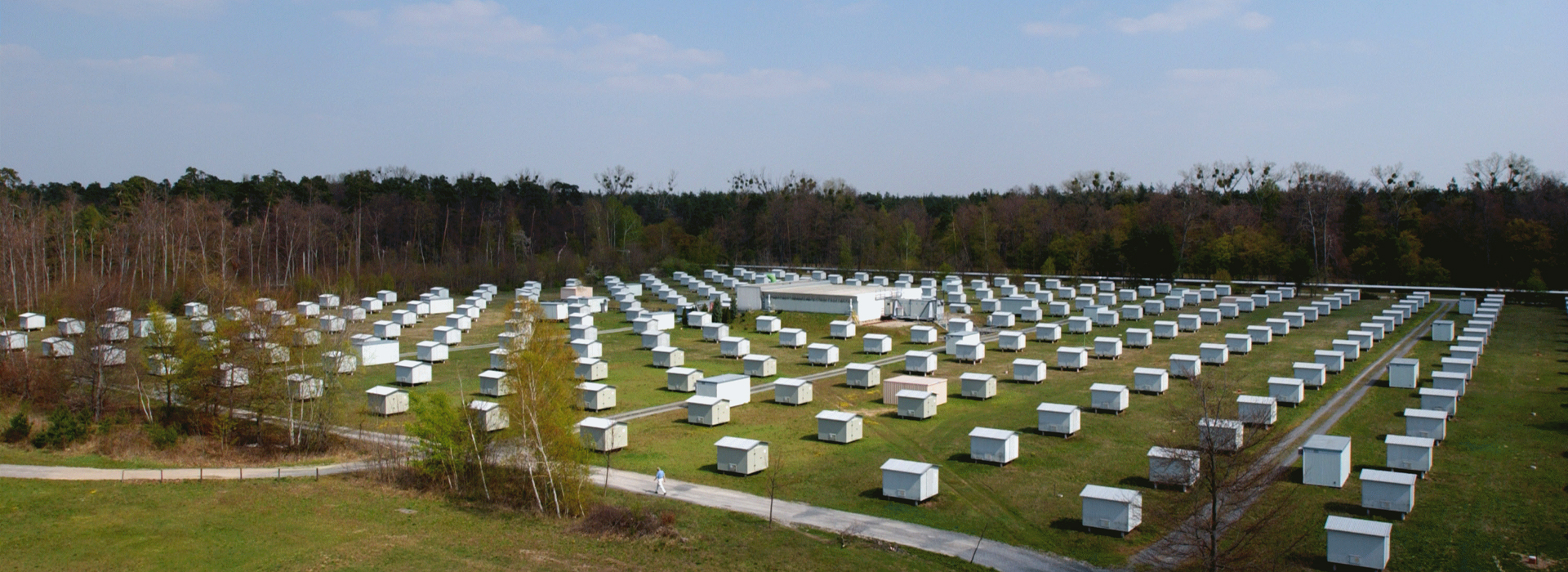The KASCADE-Grande Experiment at KIT Campus North
KArlsruhe Shower Core and Array DEtector – Grande: The Research Subject
KASCADE – Grande was an extensive air shower experiment array to study the cosmic ray primary composition and the hadronic interactions in the energy range E0=1016-1018eV.
The experiment was situated on site of the former Forschungszentrum Karlsruhe (now Karlsruhe Institute of Technology, KIT, 49,1°N, 8,4°O) at 110m a.s.l, corresponding to an average athmospheric depth of 1022g/cm2. It measured simultaneously the electromagnetic, muonic and hadronic componenets of extensive air showers of cosmic rays.
As an extension of the former KASCADE experiment running successfully since 1996, KASCADE-Grande was built by reassembling 37 stations of the former EAS-TOP experiment -basically the electromagnetic detectors- running between 1987 and 2000 at Campo Imperatore, Grand Sasso Loboratories, Italy.
One of the main results obtained by these two experiments is a picture of increasingly heavier composition above the 'knee' caused by a break in the spectrum of the light components. Conventional acceleration models predict a change of the composition towards heavier components. The discovery of the knee in the heavy components, represented by iron, by KASCADE-Grande around 80 PeV was a convincing verification of these theories.
The KASCADE data are published through the KASCADE Cosmic Ray Data Centre (KCDC). In accordance with the "Berlin Declaration on Open Data and Open Access" the KASCADE Collaboration and KIT decided to provide free access to the KASCADE data via the internet. The aim of the project KCDC is the installation and establishment of a public data centre for high-energy astroparticle physics based on the data of the KASCADE experiment.
More about KASCADE.
